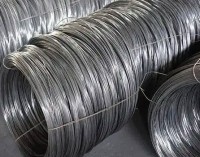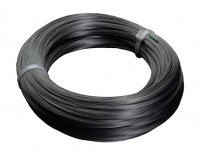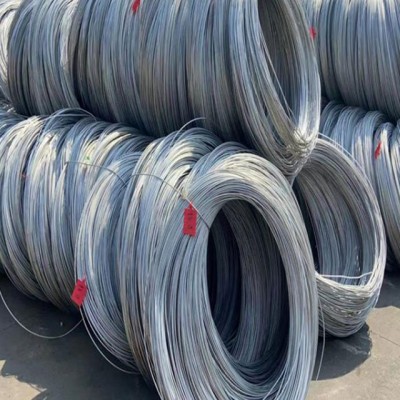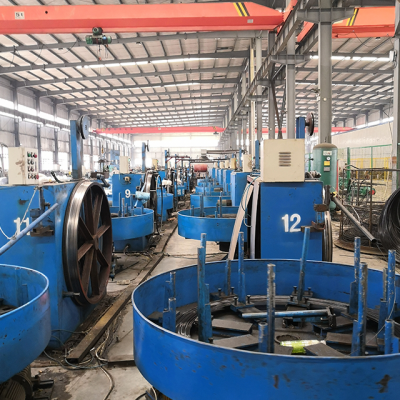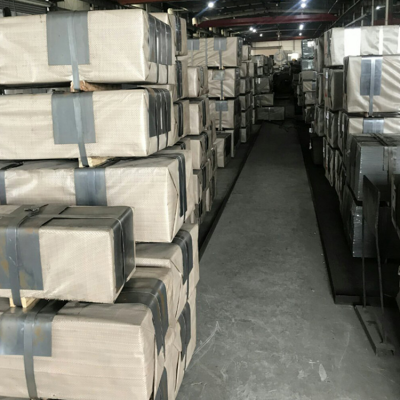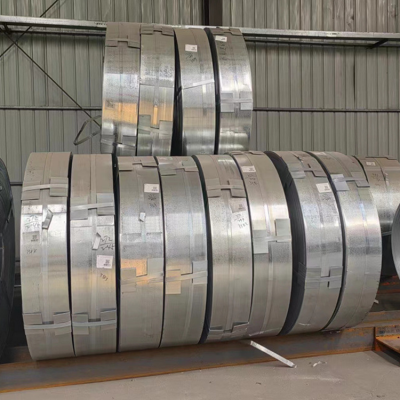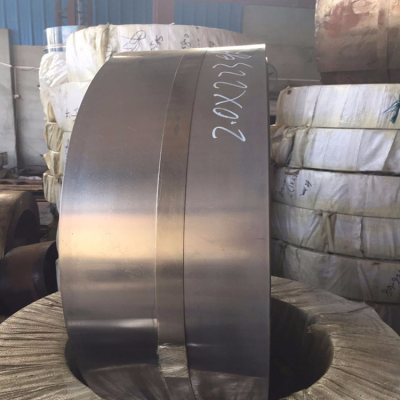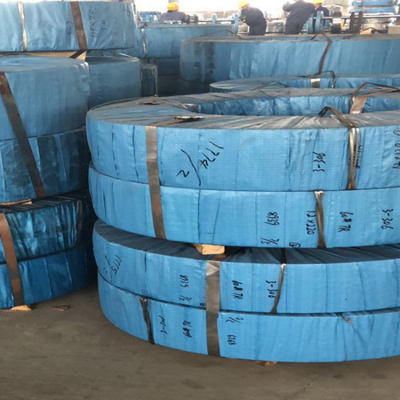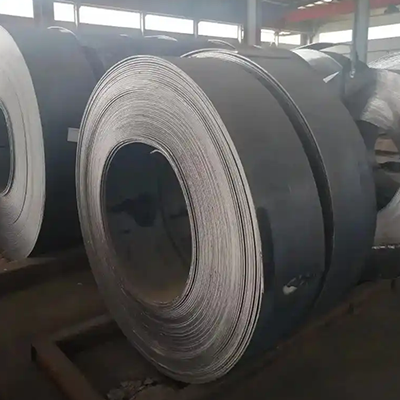
Cold-drawn spring steel wire is widely used in industrial production, from precision instruments to large machinery. However, the problem of wire fracture during coiling often occurs, which not only affects production efficiency and increases costs but also poses serious threats to product quality and safety. Therefore, in-depth exploration of the causes of cold-drawn spring steel wire fracture during coiling is of great practical significance.
Material Properties
Cold-drawn spring steel wires are typically made of high-quality carbon steel or alloy steel, featuring high strength, high elastic limit, and good fatigue resistance. Their chemical composition and microstructure play a key role in determining performance. For example, the carbon content affects the strength and toughness of the wire, while alloying elements such as chromium, nickel, and manganese can improve the hardenability, wear resistance, and corrosion resistance of the wire. In terms of microstructure, uniform and fine pearlite and sorbite structures are conducive to obtaining good comprehensive properties.
Common Forms of Fracture
During coiling, cold-drawn spring steel wire fractures mainly in two forms:
Brittle fracture: The fracture surface is flat and crystalline, with no obvious plastic deformation before fracture.
Ductile fracture: The fracture surface is dimpled, with certain plastic deformation before fracture.
Brittle fracture is often more dangerous because it is difficult to detect in advance and may lead to serious accidents.
Stages of Fracture Occurrence
· In the early stage of coiling: The wire may fracture due to inherent defects such as surface cracks or internal inclusions that cannot withstand the stress during coiling.
· During the coiling process: As coiling progresses, bending stress, torsional stress, etc., accumulate in the wire, and fracture occurs when the stress exceeds its bearing capacity.
· During subsequent processing or use after coiling: Residual stress release or external environmental factors may also cause wire fracture.
Analysis of Fracture Causes
Material Defects
· Surface Defects: Mechanical damage on the wire surface, such as scratches, pits, and folds, are common fracture sources. These defects cause stress concentration during coiling and reduce the wire’s bearing capacity. For example, if the die surface is rough or contaminated during drawing, the wire surface may be scratched. Surface decarburization is also a critical issue, as it reduces the surface hardness and fatigue strength of the wire, making it prone to crack initiation and propagation during coiling.
· Internal Defects: Aggregation of nitrides in the structure 破坏 (destroys) the material continuity, forming weak areas that are prone to cracking under external forces. In addition, inclusions in the steel, such as oxides and sulfides, reduce material performance and increase the tendency to fracture. The size, shape, and distribution of inclusions significantly affect fracture: larger size and uneven distribution lead to greater hazards.
· Performance Defects: Excessively high material strength reduces its plastic margin. Although high strength is an advantage of cold-drawn spring steel wire, if the strength exceeds a reasonable range, the wire becomes too brittle and hard to withstand complex stresses such as bending and torsion during coiling, leading to fracture. Insufficient toughness of the wire also weakens its ability to resist crack propagation.
Processing Technology Issues
· Improper Coiling Process Parameters:
· Too fast coiling speed subjects the wire to large impact forces in a short time, easily causing cracks.
· Too low coiling temperature reduces the wire’s plasticity and increases the risk of fracture. For example, in cold winter regions, if the workshop lacks proper heating equipment, wire coiling at low temperatures is more prone to problems.
· Too small bending radius during coiling causes excessive tensile stress on the outer side of the wire, leading to fracture when the stress exceeds its tensile strength. Different specifications of wires should select appropriate bending radii according to their performance.
· Equipment and Die Problems:
· The accuracy and stability of coiling equipment significantly affect wire quality. If the transmission system of the equipment has clearances or vibrations, the wire may experience uneven stress during coiling, leading to fracture.
· The design and manufacturing quality of dies are also crucial. Rough die surfaces, severe wear, or unreasonable shapes can damage the wire surface and increase the likelihood of fracture. For example, too small fillet radius of the die causes local stress concentration on the wire during coiling, prone to crack initiation.
· Inadequate Lubrication and Cooling:
· Good lubrication during coiling reduces friction between the wire and the die, minimizing surface damage. Insufficient lubrication generates heat due to friction, increasing the wire’s temperature, affecting its properties, and even causing local annealing and strength reduction.
· Inadequate cooling also leads to excessive wire temperature during coiling, affecting its microstructure and properties, and increasing fracture risk.
Environmental Factors
· Temperature and Humidity:
· Too low ambient temperature reduces the wire’s toughness and increases brittleness, making it prone to fracture during coiling. For example, outdoor operations in cold winter often see higher wire fracture rates.
· Too high humidity causes surface rusting of the wire; corrosion products damage the surface integrity, forming corrosion pits that become crack sources. This is particularly evident in wires without surface protection.
· Corrosive Media:
· If cold-drawn spring steel wire is coiled in an environment with corrosive media (e.g., acidic or alkaline solutions), chemical reactions occur on the wire surface, causing corrosion. Corrosion not only reduces the wire’s cross-sectional area but also forms pits, inducing stress concentration and accelerating fracture. In some chemical plants, due to the presence of large amounts of corrosive gases or liquids in the production environment, wires are more vulnerable to corrosion during coiling and use.
Preventive Measures Against Fracture
Material Quality Control
· Strict Raw Material Inspection: When purchasing cold-drawn spring steel wire, conduct strict inspections of raw materials, including chemical composition analysis, mechanical property testing, metallographic structure examination, and surface quality inspection. Ensure all indicators meet standards and eliminate defective materials from entering production. For example, use a metallographic microscope to observe the wire’s microstructure for defects such as nitride aggregation and inclusions.
· Optimize Material Production Processes: Wire manufacturers should optimize production processes to improve material quality. In smelting, adopt advanced refining technologies to reduce impurity content and minimize inclusion formation. In drawing and heat treatment processes, strictly control process parameters to ensure uniform microstructure and stable properties of the wire. For example, control drawing speed and deformation to avoid excessive residual stress in the wire.
· Select Appropriate Materials: Choose suitable cold-drawn spring steel wire materials based on the spring’s application requirements and working environment. For springs subjected to high stress and fatigue loads, select materials with high strength and toughness; for springs operating in corrosive environments, use corrosion-resistant materials such as stainless steel wires. Meanwhile, consider material cost and processability to achieve optimal selection.
Optimize Processing Technology
· Reasonably Adjust Coiling Parameters: Adjust coiling speed, temperature, bending radius, etc., according to the wire’s material, specifications, and coiling requirements. Determine the optimal process parameter combination through pre-coiling tests. For example, for some high-strength wires, appropriately reduce coiling speed and increase coiling temperature to improve plasticity and reduce fracture risk. Adjust parameters in real time to ensure coiling stability.
· Maintain and Improve Equipment and Dies: Regularly maintain coiling equipment, inspect the operation of transmission systems, control systems, and other components, and promptly eliminate faults and hidden dangers. Regularly clean, repair, and replace dies to ensure surface finish and dimensional accuracy. Adopt advanced die manufacturing technologies and materials to improve die wear resistance and service life. For example, coat the die surface with a hard coating to effectively reduce friction and wear between the die and the wire.
· Strengthen Lubrication and Cooling Management: Select appropriate lubricants and cooling media and ensure adequate supply. Lubricants should have good lubricating, anti-wear, and anti-rust properties to form a strong lubricating film between the wire and the die, reducing friction. Cooling media should timely dissipate heat generated during coiling to maintain the wire’s temperature within a suitable range. Regularly inspect and maintain lubrication and cooling systems to ensure normal operation.
Improve Environmental Conditions
· Control Workshop Temperature and Humidity: Install temperature and humidity control equipment in the workshop to maintain suitable ranges. For cold-drawn spring steel wire coiling, the temperature is generally recommended to be 15°C–25°C, and humidity 40%–60%. This reduces the impact of environmental factors on wire properties and lowers fracture risk.
· Avoid Corrosive Environments: Arrange coiling work in clean, dry, and corrosion-free environments as much as possible. If operation in corrosive environments is unavoidable, take effective protective measures for the wire, such as applying anti-rust paint or wrapping with plastic film. Strengthen monitoring of the workshop environment to detect and address potential corrosion hazards promptly.
Conclusion
Fracture of cold-drawn spring steel wire during coiling is a complex issue involving material defects, processing technology problems, and environmental factors. Through in-depth analysis of fracture causes, targeted preventive measures can be taken—from material quality control and processing technology optimization to environmental condition improvement—to comprehensively enhance the quality and reliability of cold-drawn spring steel wire coiling. Only by doing so can wire fracture be effectively reduced, production efficiency improved, product quality ensured, and a strong guarantee provided for smooth industrial production. In practical production, experience should be continuously summarized, and processes and management should be continuously improved to address emerging new problems and challenges, promoting the continuous development of cold-drawn spring steel wire application technology.
View document


 English
English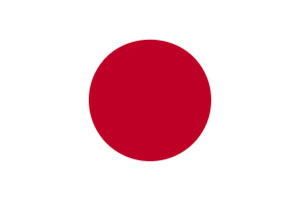 日本
日本 한국인
한국인 Français
Français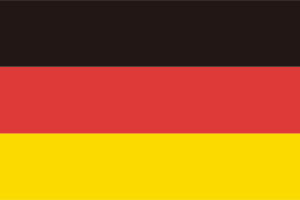 Deutsch
Deutsch español
español Italiano
Italiano Portugal
Portugal Việt Nam
Việt Nam türkiye
türkiye عرب
عرب Русский
Русский čeština
čeština แบบไทย
แบบไทย Eesti
Eesti Gaeilge
Gaeilge Hmoob
Hmoob íslenskur
íslenskur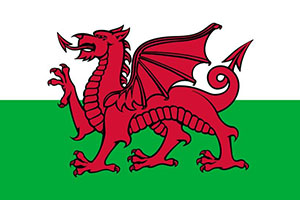 Cymraeg
Cymraeg български
български اردو
اردو Polski
Polski Hrvatski
Hrvatski українська
українська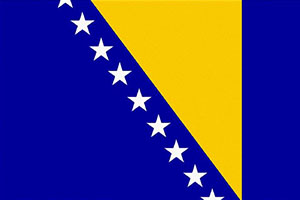 bosanski
bosanski فارسی
فارسی lietuvių
lietuvių latviski
latviski עִברִית
עִברִית Română
Română Ελληνικά
Ελληνικά dansk
dansk Magyar
Magyar norsk
norsk Suomalainen
Suomalainen Nederlands
Nederlands svenska
svenska slovenský
slovenský Slovenščina
Slovenščina हिंदी
हिंदी Indonesia
Indonesia Melayu
Melayu Malti
Malti Kreyòl ayisyen
Kreyòl ayisyen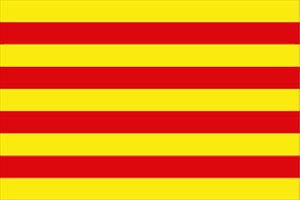 català
català বাংলা
বাংলা Српски
Српски o'zbek
o'zbek

